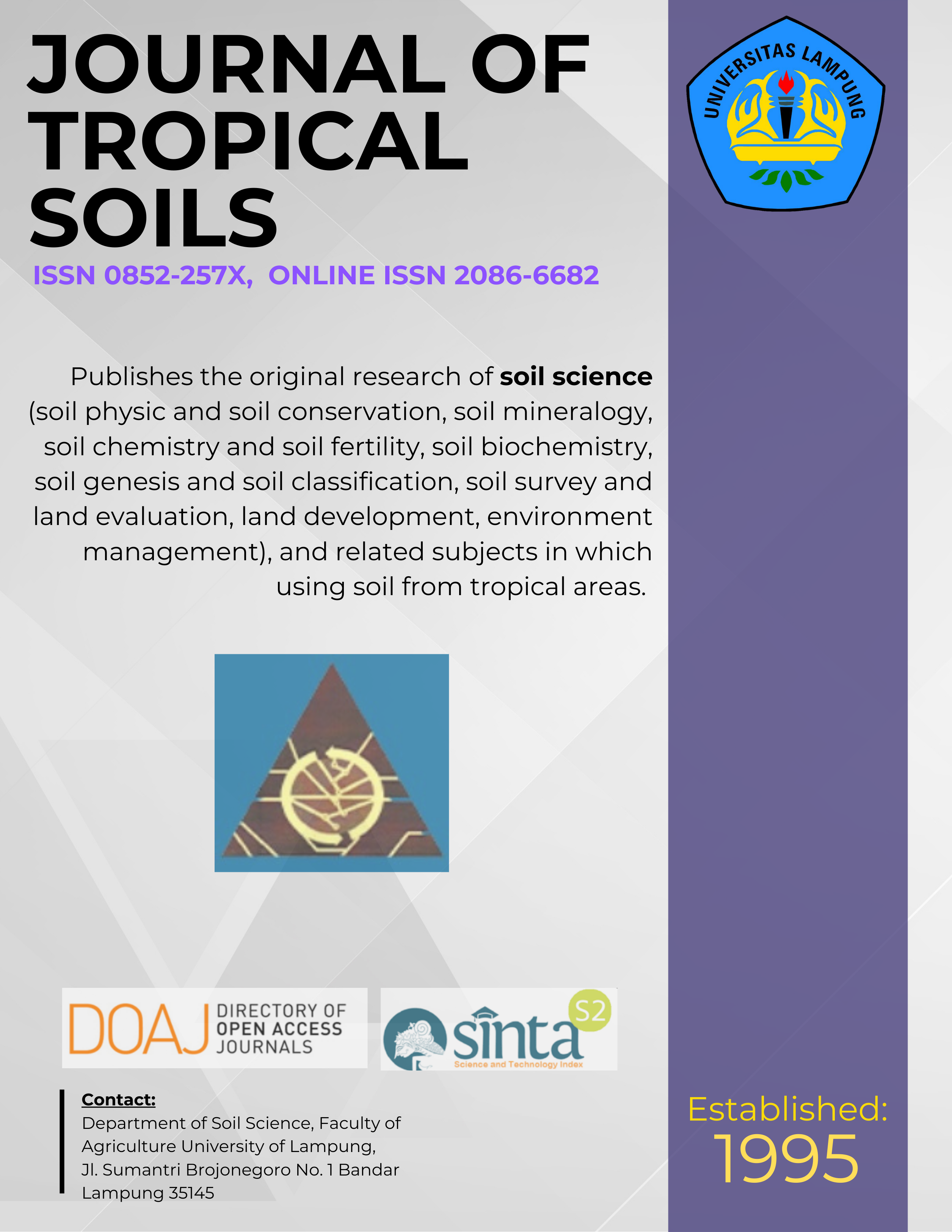Application of Rice Straw and Tithonia for Increasing Fertilizer Use Efficiency on Paddy Soil
Main Article Content
Abstract
The research was aimed to obtain a combination of rice straw (S) and tithonia (Tithonia diversifolia) (T) to increase
chemical fertilizers use efficiency (FUE) on paddy soil which was conducted in Sicincin, Padang Pariaman Regency
in 2008. The experiment consisted of 8 treatments (A= recommendation input: 200 kg Urea ha-1 (Ru) + 100 kg SP-36
ha-1 (Rp) + 75 kg KCl ha-1 (Rk)), B = Ru + 2Rp, C = 2.5 Mg Tithonia (T) ha-1 + 75% Ru+10 kg SP36 ha-1 as a starter P
fertilizer (P-s), D = T + 75% Ru, E = 5 Mg Rice Straw (S) ha-1 (Sr) + Ru + Rp + Rk, F = Sr + Ru + P-s, G = T + 0.5Sr + 75%
Ru + P-s, H = T + 0.5S + 50% Ru + P-s) with three replications. The treatments were randomly allocated in each block
Randomized Block Design (RBD). The results showed that application of fresh organic matter (OM) from tithonia +
75% recommended Urea without KCl and P-starter addition on intensification rice field increased synthetic FUE on
paddy soil. Application of tithonia for 2.5 Mg ha-1 + 75% of recommended Urea (150 kg Urea), without synthetic P
and K fertilizers seemed to be the best treatment to get the highest yield (8.08 Mg Harvested Dry Seed (HDS) ha-1
(= 7.05 Mg Milled Dry Seed (MDS) ha-1) of rice, then it was followed by the treatment based on farmer tradition input
with the yield was 7.25 Mg HDS ha-1 (= 6.41 Mg MDS ha-1). The use of fresh tithonia as much as 2.5 Mg ha-1 based
on its dry weight could be considered as an alternative fertilizer for rice crops in intensification rice field.
[How to Cite: Gusnidar, S Yasin, Burbey, Yulnafatmawita, S Saleh and R Andhika. 2012. Application of Rice Straw and Tithonia for Increasing Fertilizer Use Efficiency on Paddy Soil. J Trop Soils 17 (2) : 151-156. Doi: 10.5400/jts.2012.17.2.151]
Â
[Permalink/DOI: www.dx.doi.org/10.5400/jts.2012.17.2.151]
Downloads
Article Details
Issue
Section
License for Authors
Authors who publish with this journal agree to the following terms:
- Authors retain copyright and grant the journal right of first publication with the work simultaneously licensed under a Creative Commons Attribution License that allows others to share the work with an acknowledgement of the work's authorship and initial publication in this journal.
- Authors are able to enter into separate, additional contractual arrangements for the non-exclusive distribution of the journal's published version of the work (e.g., post it to an institutional repository or publish it in a book), with an acknowledgement of its initial publication in this journal.
- Authors are permitted and encouraged to post their work online (e.g., in institutional repositories or on their website) prior to and during the submission process, as it can lead to productive exchanges, as well as earlier and greater citation of published work (See The Effect of Open Access).
License for Regular Users
Other regular users who want to cite, distribute, remix, tweak, and build upon author’s works, even for commercial purposes, should acknowledge the work’s authorship and initial publication in this journal, licensed under a Creative Commons Attribution License.

